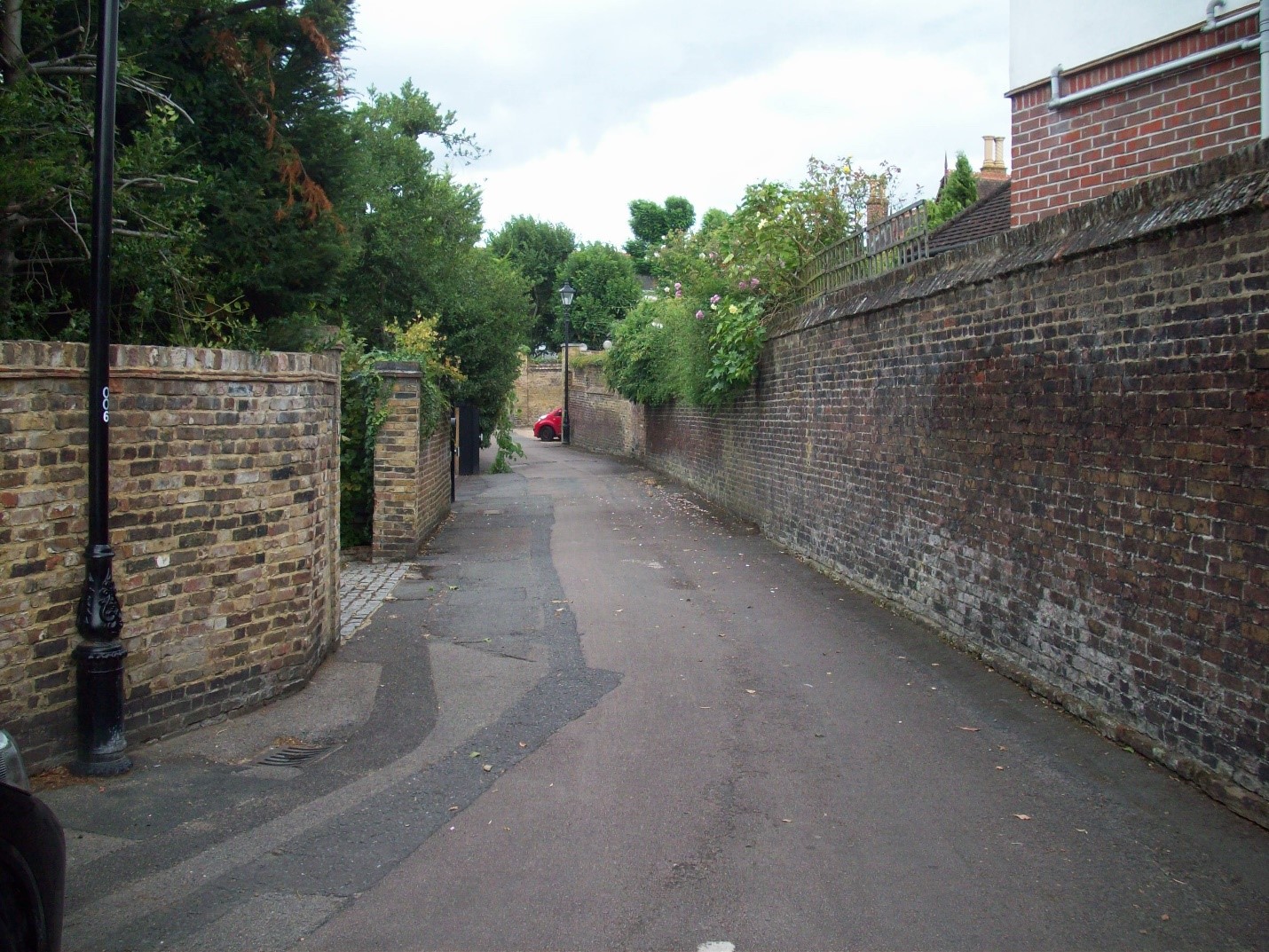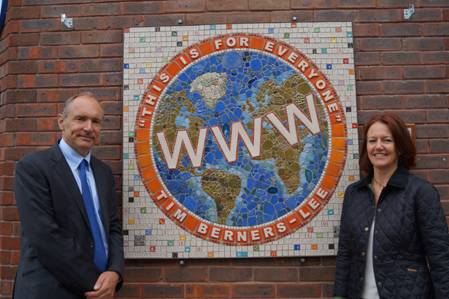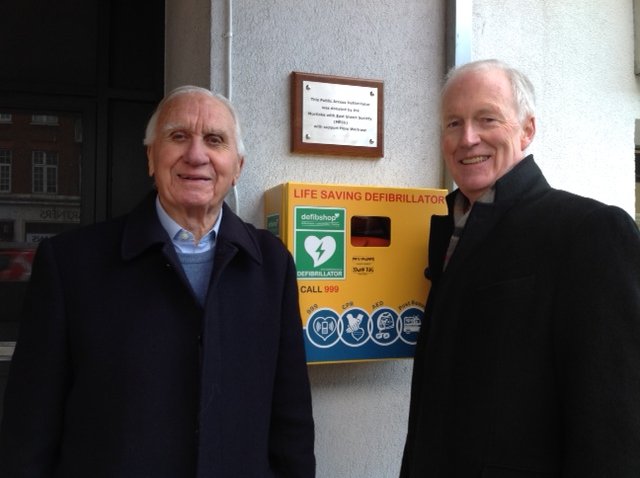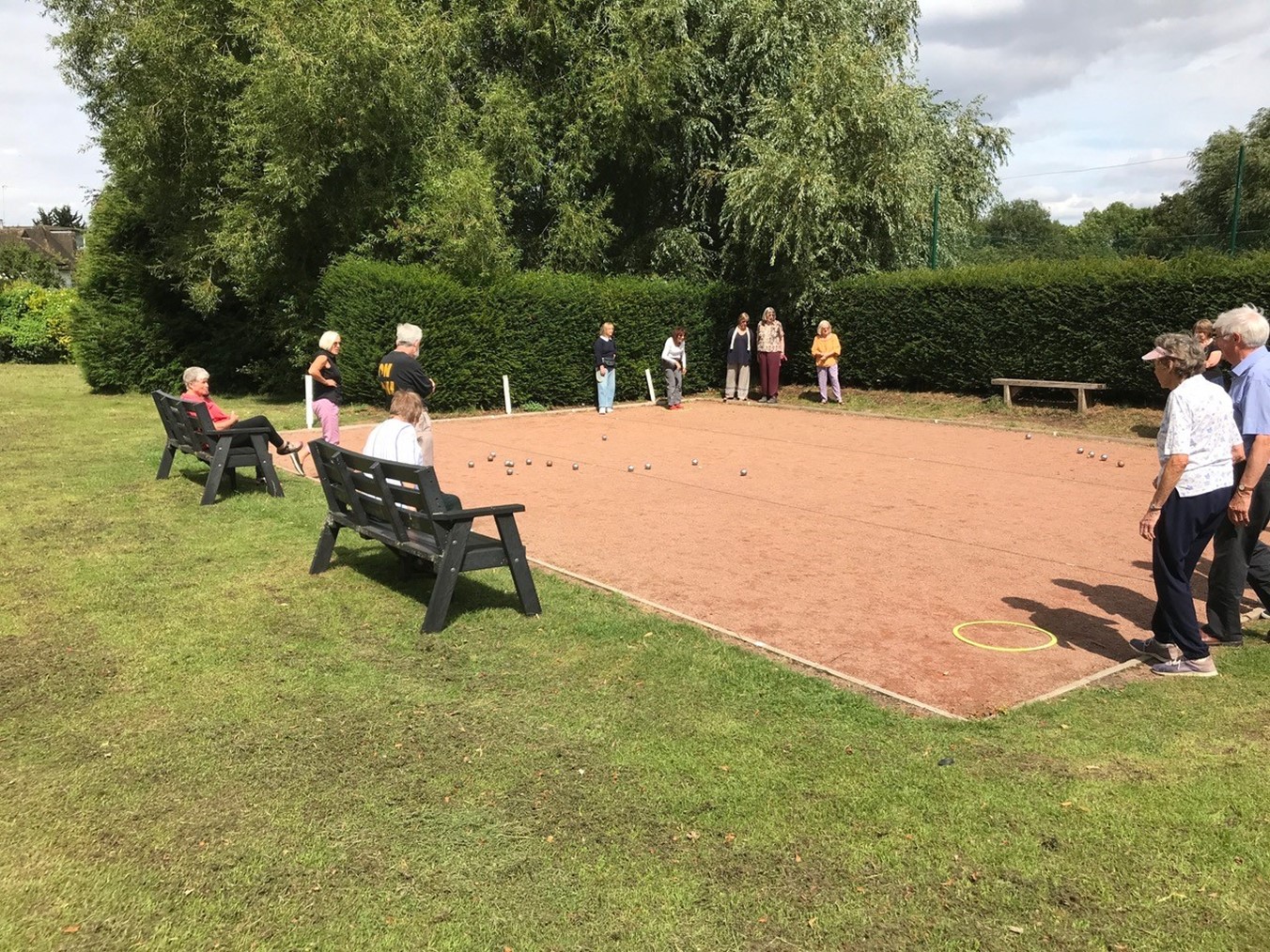| Our Aims | Projects | 50th Anniversary |
Our Historic Walls
There are a number of walls in our area which were built in Victorian times and earlier as boundary walls for large houses. By the end of the Victorian era almost all the large houses had been demolished to make way for the terraced and semi-detached housing that we see today – but quite a few walls of the previous era have remained. Are they protected and who is looking after them?
In 2015 we made a catalogue of our historic walls and sent it to the Council with a request that they be given some degree of protection. In 2017 the Council responded by designating all the walls we identified as Buildings of Townscape Merit (BTMs). However we have since become aware of others that were not identified in 2015 including all the walls in Mortlake, so we will be submitting a supplementary catalogue to the Council for further designations early next year.
Our historic walls were the subject of a talk on 26 Oct 2020 given by Patience Trevor, who is a member of our Planning Sub-Group and formerly in the Listing Team of English Heritage. In her talk she referred to a set of maps that have been prepared showing the locations of our historic walls on today’s map base and also on Godfrey’s historic maps of 1893. If you would like to see these maps, click here.

The Air Raid Shelter at St Leonard’s Court
To book a visit to the air raid shelter, please contact shelterbookings@mess.org.uk
A group was formed in 2007 to preserve and restore the shelter for the benefit of the community. The group comprised the Mortlake with East Sheen Society, Barnes and Mortlake History Society, Environment Trust of Richmond upon Thames, St. Leonard’s Court Residents Association and Richmond Council. We raised funds for the installation of a plaque on the site giving information about the shelter and for the relevant surveys to be performed to enable us to apply for a grant for restoration.

The air raid shelter was built in 1939 and extended in 1940 to serve St Leonard’s Court which was built 1934-38 by local builder, Mr FG Fox, who also developed Deanhill Court and Queen’s Court, to the east of Richmond, at much the same time.
The Society and Environment Trust cleaned out the air raid shelter and opened it to the public for the first time on Open House weekend in 2015. It was opened again on the same weekend in 2016, 2018, 2019 and 2023 (post-Covid) and a number of primary school parties have visited the shelter by appointment since 2018. As the shelter cannot accommodate more than 15 children in one visit, and as most school classes are 30 in number, the Society has organized a system whereby classes are split with half the class visiting the shelter and the other half visiting the Guides Hall to watch a short film about the shelter, after which they swap places. To book a visit to the air raid shelter, please contact shelterbookings@mess.org.uk
The feedback from the public on Open House weekend and from the primary schools has been very encouraging and the Society is grateful to the landlords for allowing this project to continue.
Description
The air raid shelter at St Leonard’s Court comprises two day rooms and two night rooms, the latter including 48 sleeping berths. These rooms are accessed from a central corridor, running from the entrance, which descends via steps reached from a brick conical turret. The shelter is under an earth-filled turfed mound within a brick retaining wall. Under the wall and extending out beyond it is a metal plate (it is not known if this extends across the whole of the shelter), so that the whole was intended to resist blast but was landscaped to form part of the gardens of the Court where it is encircled by the entrance drive. The turret is of brick with a tile roof and is topped off by a metal weather vane.
The shelter is of brick and concrete block, with flat concrete slab roofs. The two day rooms and two night rooms are for men and women separately. Each room has an exit ladder at the outer end leading to a vent. There is no apparent seal against gas attacks. Day rooms are lined with wooden benches and have a pair of chemical lavatories at the outer end behind a screen. Night rooms are divided into four sections either side of a central passage, each with bunks. Above each bunk is an individual electric light socket behind a wooden panel designed to shade the light; each bunk has a numbered hook. In the passage is a row of similarly numbered hooks and a stove with a ventilation pipe rising from it.
The shelter survives essentially as it was left in the 1940s, complete with small evocative fittings such as a light bulb packet used as a lampshade.
The www mosaic plaque on the front wall of the Sheen Lane Centre Library
The Society commissioned and then arranged for this plaque to be installed in order to commemorate local hero, Sir Tim Berners-Lee, the founder of the Worldwide Web. Sir Tim grew up in East Sheen and his parents were founding members of MESS.
The artist Sue Edkins was commissioned to design the plaque and she did so in the form of a map of the world in ceramic mosaic.

The plaque was unveiled by Sir Tim on 24 June 2013 alongside Sue Edkins. Also in attendance were Deputy Mayor Stephen Speak, Chairman of MESS Shaun Lamplough and a large crowd of over a hundred including many school children.
The Defibrillator at Waitrose
The initiative for this project came from the East Sheen Baptist Church but it was spearheaded by Society member Peter Hames. The defibrillator was installed at Waitrose and formally launched on Saturday 14 April 2018. The actor Peter Bowles led the launch, with Air Cadets from 39F Squadron Barnes demonstrating cardiopulmonary resuscitation (CPR) on dummies beside the machine. The Society with the support of Waitrose has been organising free training sessions at the East Sheen Baptist Church for anyone wishing to learn how to administer CPR.
The Society is grateful to Waitrose for its support to this project by supplying the site, the installation and even some staff to run the CPR sessions.

The Palewell Petanque
The Society was keen to have a Millennium Project in the area – not quite as ambitious as the Millennium Dome or the Millennium Bridge or the Wetlands in Barnes – and opted for the creation of a boules terrain on Palewell Common.
The inspiration came from several Society members who had rural retreats in France where they had been playing boules alongside French villagers. They had found much pleasure in the game and were determined to introduce it to the East Sheen community.
The Society applied to the Council for planning permission for the boules terrain and associated ornamental landscaping in 1998 and was successful. The terrain was officially opened in 2000. It was later expanded.

